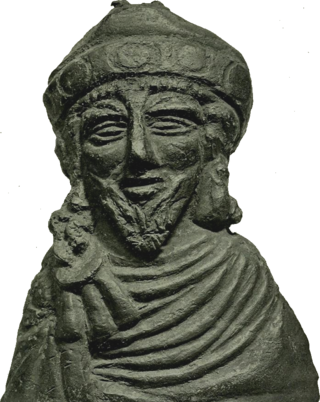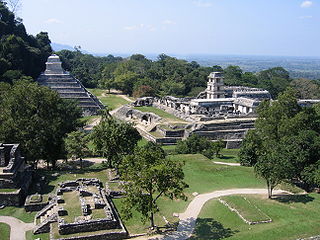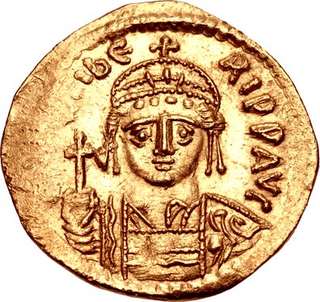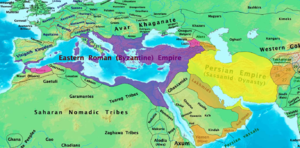
The 7th century is the period from 601 through 700 in accordance with the Julian calendar in the Christian Era.
The 610s decade ran from January 1, 610, to December 31, 619.
The 540s decade ran from January 1, 540, to December 31, 549.
The 580s decade ran from January 1, 580, to December 31, 589.
The 590s decade ran from January 1, 590, to December 31, 599.

Year 626 (DCXXVI) was a common year starting on Wednesday of the Julian calendar. The denomination 626 for this year has been used since the early medieval period, when the Anno Domini calendar era became the prevalent method in Europe for naming years.
Year 605 (DCV) was a common year starting on Friday of the Julian calendar. The denomination 605 for this year has been used since the early medieval period, when the Anno Domini calendar era became the prevalent method in Europe for naming years.

Year 617 (DCXVII) was a common year starting on Saturday of the Julian calendar. The denomination 617 for this year has been used since the early medieval period, when the Anno Domini calendar era became the prevalent method in Europe for naming years.

Phocas or Phocus was Eastern Roman emperor from 602 to 610. Initially, a middle-ranking officer in the Eastern Roman army, Phocas rose to prominence as a spokesman for dissatisfied soldiers in their disputes with the court of the Emperor Maurice. When the army revolted in 602, Phocas emerged as the natural leader of the mutiny. The revolt proved to be successful and led to the capture of Constantinople and the overthrow of Maurice on 23 November 602 with Phocas declaring himself emperor on the same day.

Year 599 (DXCIX) was a common year starting on Thursday of the Julian calendar. The denomination 599 for this year has been used since the early medieval period, when the Anno Domini calendar era became the prevalent method in Europe for naming years.

Year 598 (DXCVIII) was a common year starting on Wednesday of the Julian calendar. The denomination 598 for this year has been used since the early medieval period, when the Anno Domini calendar era became the prevalent method in Europe for naming years.

Year 591 (DXCI) was a common year starting on Monday of the Julian calendar. The denomination 591 for this year has been used since the early medieval period, when the Anno Domini calendar era became the prevalent method in Europe for naming years.

Maurice was Eastern Roman emperor from 582 to 602 and the last member of the Justinian dynasty. A successful general, Maurice was chosen as heir and son-in-law by his predecessor Tiberius II.

The Byzantine Empire was ruled by emperors of the dynasty of Heraclius between 610 and 711. The Heraclians presided over a period of cataclysmic events that were a watershed in the history of the Empire and the world. Heraclius, the founder of his dynasty, was of Armenian and Cappadocian (Greek) origin. At the beginning of the dynasty, the Empire's culture was still essentially Ancient Roman, dominating the Mediterranean and harbouring a prosperous Late Antique urban civilization. This world was shattered by successive invasions, which resulted in extensive territorial losses, financial collapse and plagues that depopulated the cities, while religious controversies and rebellions further weakened the Empire.
Maurice's Balkan campaigns were a series of military expeditions conducted by Roman Emperor Maurice in an attempt to defend the Balkan provinces of the Roman Empire from the Avars and the South Slavs. Maurice was the only East Roman emperor, other than Anastasius I, who did his best to implement determined Balkan policies during Late Antiquity by paying adequate attention to the safety of the northern frontier against barbarian incursions. During the second half of his reign, the Balkan campaigns were the main focus of Maurice's foreign policies, as a favourable peace treaty with Persian Empire in 591 enabled him to shift his experienced troops from the Persian front to the region. The refocusing of Roman efforts soon paid off: the frequent Roman failures before 591 were succeeded by a string of successes afterwards.
Comentiolus was a prominent Eastern Roman (Byzantine) general at the close of the 6th century during the reign of Emperor Maurice. He played a major role in Maurice's Balkan campaigns, and fought also in the East against the Sassanid Persians. Comentiolus was ultimately executed in 602 after the Byzantine army rebelled against Maurice and Emperor Phocas usurped the throne.
Priscus or Priskos was a leading Eastern Roman general during the reigns of the Byzantine emperors Maurice, Phocas and Heraclius. Priscus comes across as an effective and capable military leader, although the contemporary sources are markedly biased in his favour. Under Maurice, he distinguished himself in the campaigns against the Avars and their Slavic allies in the Balkans. Absent from the capital at the time of Maurice's overthrow and murder by Phocas, he was one of the few of Maurice's senior aides who were able to survive unharmed into the new regime, remaining in high office and even marrying the new emperor's daughter. Priscus, however, also negotiated with and assisted Heraclius in the overthrow of Phocas, and was entrusted with command against the Persians in 611–612. After the failure of this campaign, he was dismissed and tonsured. He died shortly after.
The 600s decade ran from January 1, 600, to December 31, 609.

The Avar–Byzantine wars were a series of conflicts between the Byzantine Empire and the Avar Khaganate. The conflicts were initiated in 568, after the Avars arrived in Pannonia, and claimed all the former land of the Gepids and Lombards as their own. This led to an unsuccessful attempt to seize the city of Sirmium from Byzantium, which had previously retaken it from the Gepids. Most subsequent conflicts came as a result of raids by the Avars, or their subject Slavs, into the Balkan provinces of the Byzantine Empire.
The 602 Surb Karapet Monastery earthquake took place in 602 and affected the Surb Karapet Monastery, located in the district of Taron.











